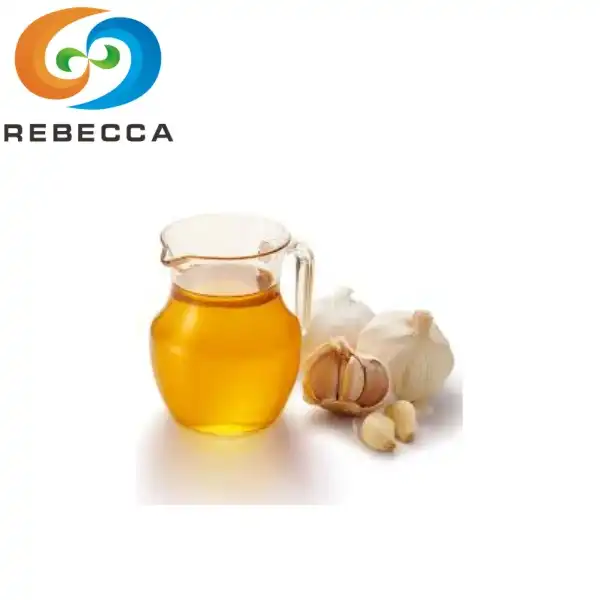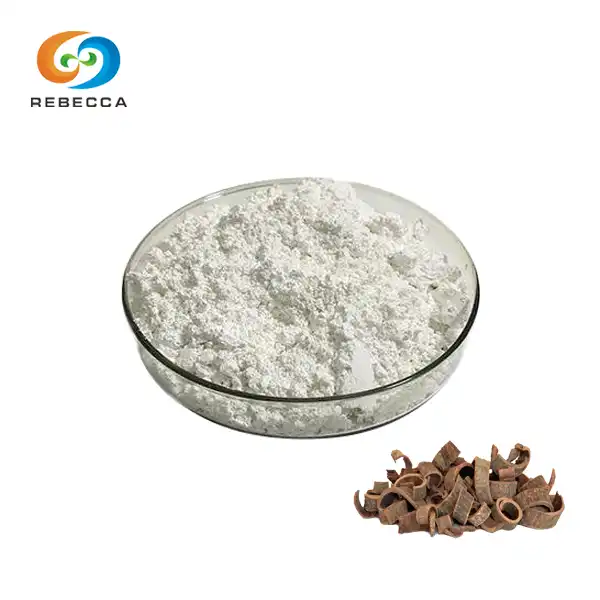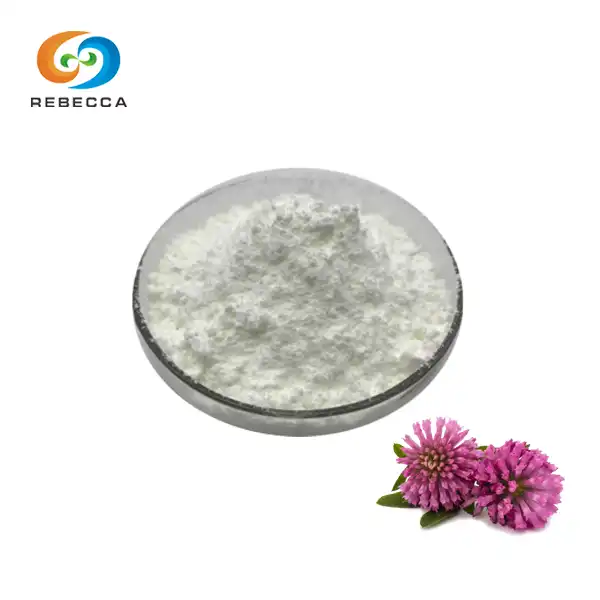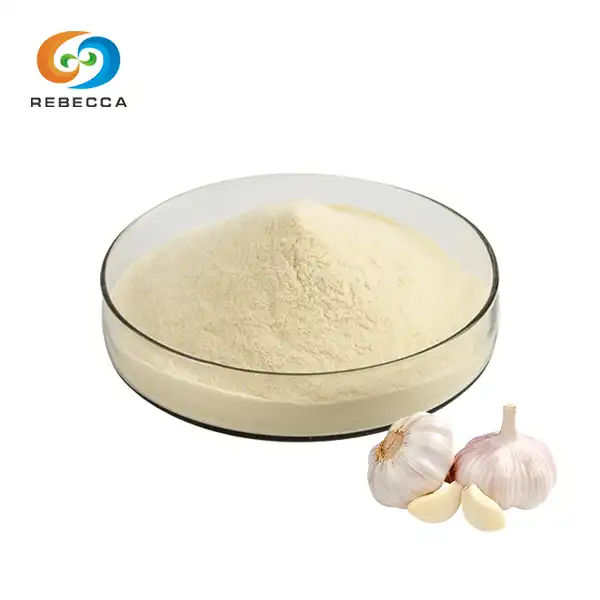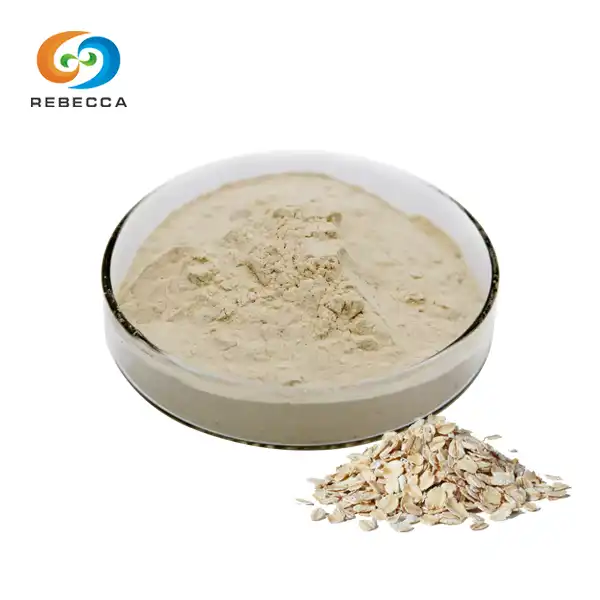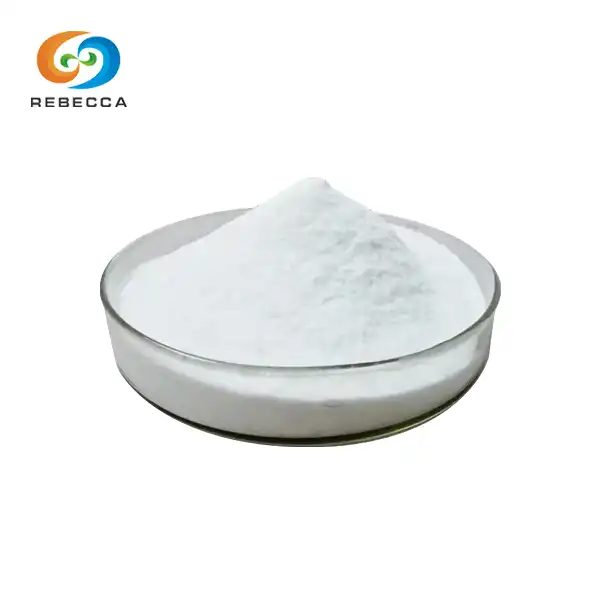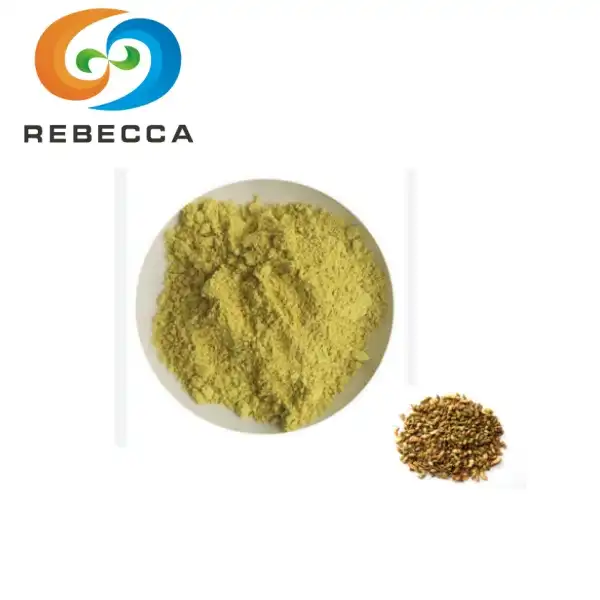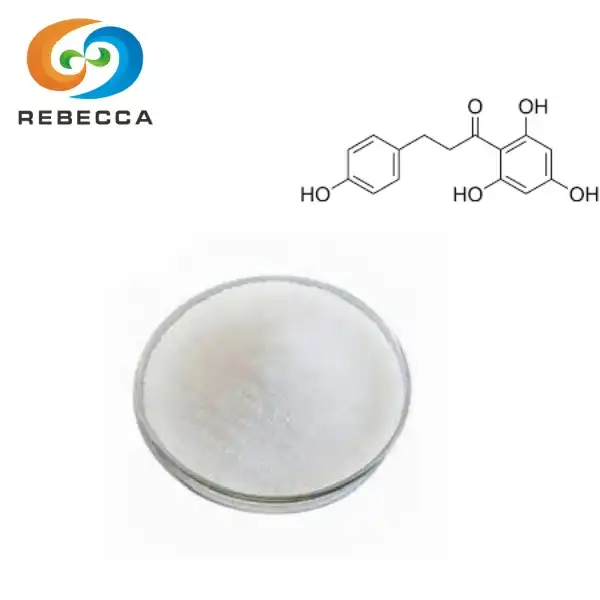What are the ingredients in Glabridin?
Glabridin powder, a fascinating compound derived from licorice root, has gained significant attention in the skincare and health industries. As consumers become more interested in natural ingredients, understanding the composition and properties of glabridin has become increasingly important. In this comprehensive guide, we'll explore the ingredients in glabridin, its chemical composition, and whether it's considered a natural or synthetic compound.
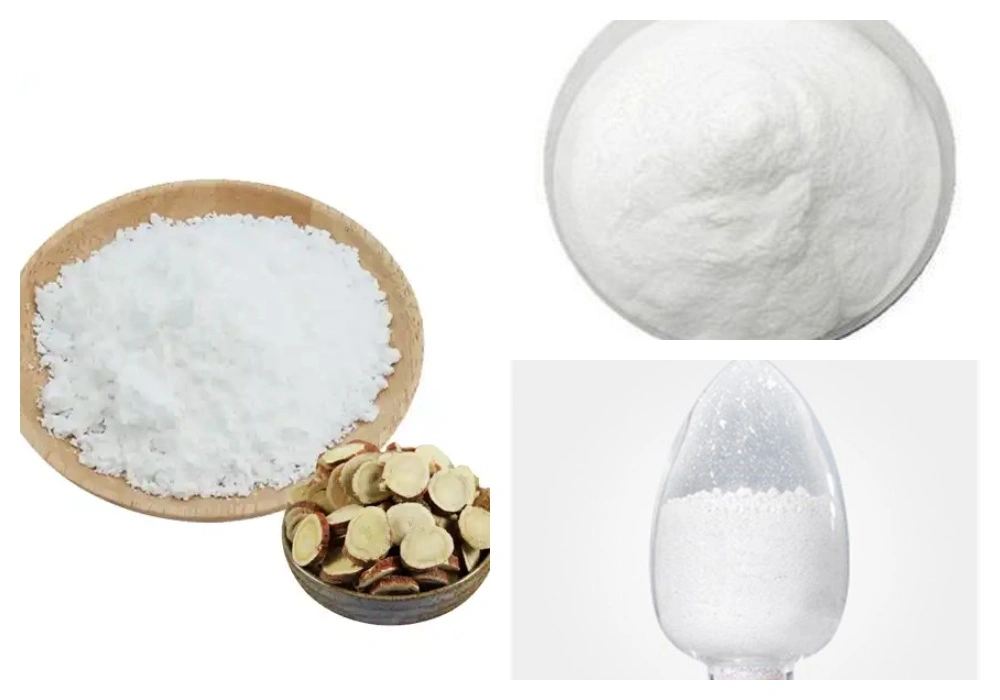
What is the chemical composition of Glabridin?
Glabridin is a naturally occurring isoflavonoid found in the root of the licorice plant (Glycyrrhiza glabra). Its chemical formula is C20H20O4, and it belongs to the flavonoid family of compounds. The molecular structure of glabridin extract consists of a flavonoid skeleton with specific substitutions that give it its unique properties.
The chemical composition of glabridin includes:
- A flavonoid core structure
- Two hydroxyl groups
- An isopentenyl group
- A methylenedioxy group
These structural elements contribute to glabridin's ability to interact with various biological systems, making it a compound of interest in both cosmetic and pharmaceutical applications.
Glabridin's chemical properties include:
- Molecular weight: 324.37 g/mol
- Melting point: 202-204°C
- Solubility: Poorly soluble in water, but soluble in organic solvents
The unique chemical structure of glabridin is responsible for its various biological activities, including antioxidant, anti-inflammatory, and skin-lightening properties. These characteristics make it a valuable ingredient in skincare products and potential therapeutic applications.
Are there any additives in commercial Glabridin products?
Commercial glabridin products, particularly those used in cosmetics and dietary supplements, often contain additional ingredients to enhance stability, improve absorption, or provide specific formulation characteristics. While pure glabridin extract or powder is available, many products on the market include various additives.
Common additives found in commercial glabridin products include:
- Carriers and fillers: These are often used to improve the stability and handling of the product. Examples include:
- Maltodextrin
- Microcrystalline cellulose
- Silicon dioxide
- Emulsifiers: These help to disperse glabridin in liquid formulations. Common emulsifiers include:
- Polysorbate 80
- Lecithin
- Preservatives: To extend shelf life and prevent microbial growth, preservatives may be added, such as:
- Potassium sorbate
- Sodium benzoate
- Antioxidants: These are sometimes added to protect glabridin from oxidation. Examples include:
- Vitamin E (tocopherols)
- Ascorbic acid (Vitamin C)
- Solubilizers: To improve the solubility of glabridin in water-based formulations, ingredients like propylene glycol or glycerin may be used.
It's important to note that the presence and types of additives can vary significantly between different commercial glabridin products. Manufacturers may use proprietary blends or specific formulations to enhance the stability, bioavailability, or efficacy of their glabridin-containing products.
When selecting a glabridin product, it's crucial to carefully review the ingredient list and choose a reputable manufacturer. For those seeking the purest form of glabridin, look for products labeled as "pure glabridin powder" or "glabridin extract" with minimal additional ingredients.

Is Glabridin considered a natural or synthetic compound?
Glabridin powder is primarily considered a natural compound. It is naturally occurring in the roots of the licorice plant (Glycyrrhiza glabra) and can be extracted through various methods. The natural origin of glabridin is one of the reasons for its popularity in the natural products and cosmetics industries.
However, it's important to understand that the term "natural" can have different interpretations in the context of commercial products:
- Naturally extracted glabridin: This refers to glabridin that is directly extracted from licorice roots using various extraction methods such as solvent extraction or supercritical fluid extraction. This form of glabridin is considered the most natural.
- Standardized extracts: Many commercial products use standardized licorice root extracts that are concentrated to contain a specific percentage of glabridin. While these are still derived from natural sources, they undergo more processing.
- Synthesized glabridin: It is possible to synthesize glabridin in a laboratory setting. While the resulting compound is chemically identical to naturally occurring glabridin, it would be considered synthetic. However, synthetic glabridin is less common in commercial products due to the availability of natural sources and consumer preference for natural ingredients.
The preference for natural glabridin stems from several factors:
- Consumer demand for natural and plant-based ingredients
- Potential synergistic effects with other compounds naturally present in licorice root
- Sustainability and eco-friendliness of plant-derived ingredients
It's worth noting that while glabridin itself is natural, the extraction and purification processes used to obtain it for commercial use can vary in their degree of "naturalness." Some processes may involve the use of chemical solvents or other techniques that some consumers might not consider entirely natural.
When choosing a glabridin product, it's essential to consider your specific needs and preferences. If naturalness is a priority, look for products that clearly state they use naturally extracted glabridin or licorice root extract. Always check the ingredient list and, if in doubt, contact the manufacturer for more information about their sourcing and production methods.
Glabridin Extract For Sale
Glabridin, with its unique chemical composition and natural origin, offers a wide range of potential benefits in skincare and health applications. Whether you're looking for pure glabridin powder or a standardized extract, understanding the ingredients, additives, and nature of the compound can help you make an informed decision.
Rebecca Bio-Tech stands at the forefront of glabridin production, offering high-quality glabridin extract with consistent quality and competitive pricing. With an annual production capacity exceeding 1000kg, we are well-equipped to meet your glabridin needs, whether for research, product development, or large-scale manufacturing.
For more information about our glabridin products, including detailed specifications, sample requests, or to discuss your custom requirements, please don't hesitate to contact us at information@sxrebecca.com. Our team of experts is ready to assist you in finding the perfect glabridin solution for your needs.
References
- Simmler, C., Pauli, G. F., & Chen, S. N. (2013). Phytochemistry and biological properties of glabridin. Fitoterapia, 90, 160-184.
- Aoki, F., Nakagawa, K., Kitano, M., Ikematsu, H., Nakamura, K., Yokota, S., ... & Miyazawa, T. (2007). Clinical safety of licorice flavonoid oil (LFO) and pharmacokinetics of glabridin in healthy humans. Journal of the American College of Nutrition, 26(3), 209-218.
- Yu, X., Zhu, J., Mi, M., Chen, W., Pan, Q., & Wei, M. (2012). Anti-angiogenic genistein inhibits VEGF-induced endothelial cell activation by decreasing PTK activity and MAPK activation. Medical Oncology, 29(1), 349-357.
- Fuhrman, B., Volkova, N., Kaplan, M., Presser, D., Attias, J., Hayek, T., & Aviram, M. (2002). Antiatherosclerotic effects of licorice extract supplementation on hypercholesterolemic patients: increased resistance of LDL to atherogenic modifications, reduced plasma lipid levels, and decreased systolic blood pressure. Nutrition, 18(3), 268-273.
- Vaya, J., Belinky, P. A., & Aviram, M. (1997). Antioxidant constituents from licorice roots: isolation, structure elucidation and antioxidative capacity toward LDL oxidation. Free Radical Biology and Medicine, 23(2), 302-313.
